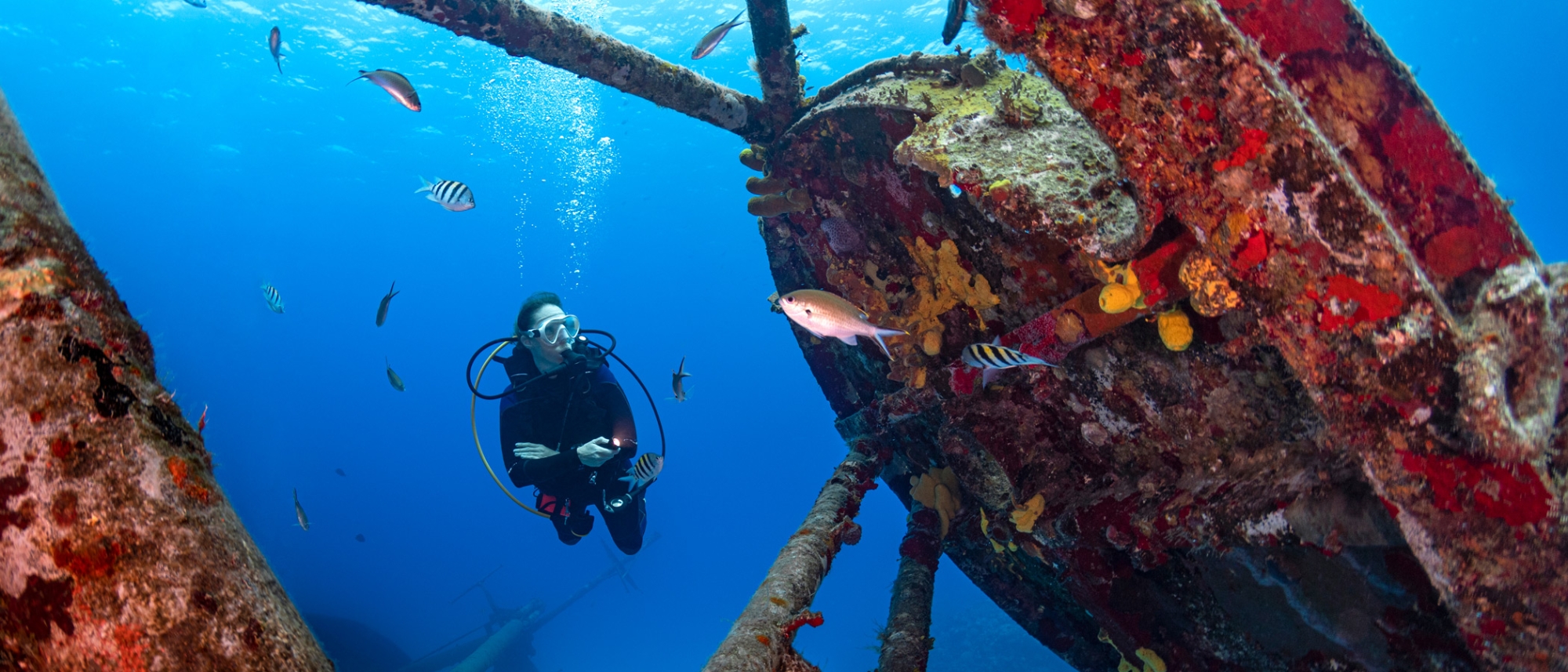
6 of the Caribbean’s best dive destinations
Underwater adventure awaits
With so many shipwrecks and reefs to explore in the Caribbean, it can get a bit daunting to figure out your next dive site. Lucky for you, we’ve got a list of the top scuba diving and snorkelling sites of the Caribbean, so don’t muddy the waters! Check out our one-stop-shop to see the best places under the sea.
Shipwrecks, spice, and everything nice
Foodies will recognize Grenada’s nickname of Spice Island, but today we’re going to focus on its other moniker: the Shipwreck Capital of the Caribbean. The serene waters around the island host more than 40 shipwrecks and dive sites to discover. Beginners can enjoy the serene waters of White Sand Beach to observe the coral and sea sponges, while more experienced divers can check out the iconic wreck of the 180-metre-long Bianca C. For a truly unforgettable underwater experience, visit the world’s first Underwater Sculpture Park at Molinere Reef, which sits at a depth shallow enough for snorkellers to visit.
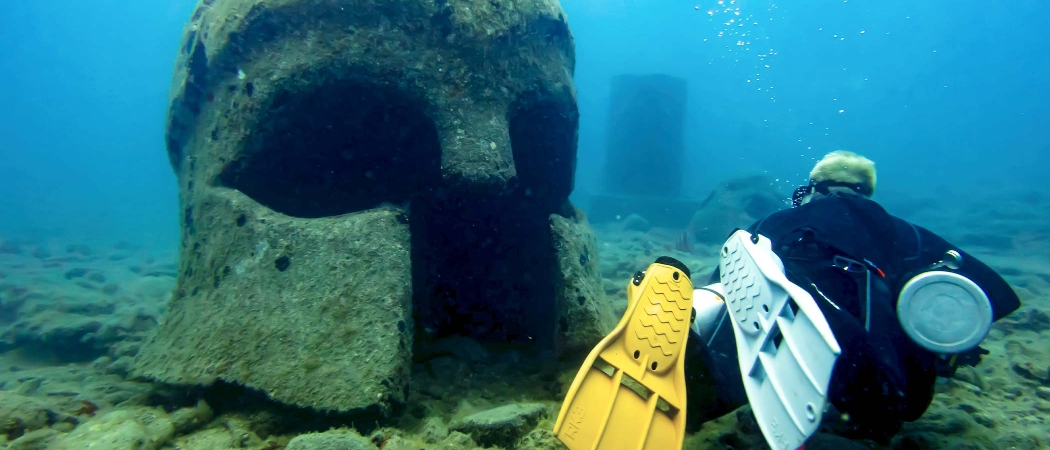
Beauty below the Bahamian waves
With over 176 identified shipwrecks surrounding the islands, The Bahamas are a dream come true for amateur treasure hunters and scuba divers from around the world. Fans of spy films can take a trip to some famous movie wrecks in New Providence. Plus, there’s plenty of marine life to admire, like sea turtles and stingrays. Then, check out Andros Barrier Reef, the 3rd largest in the world, where you can spot tropical fish and sea turtles while exploring stunning walls and caves.
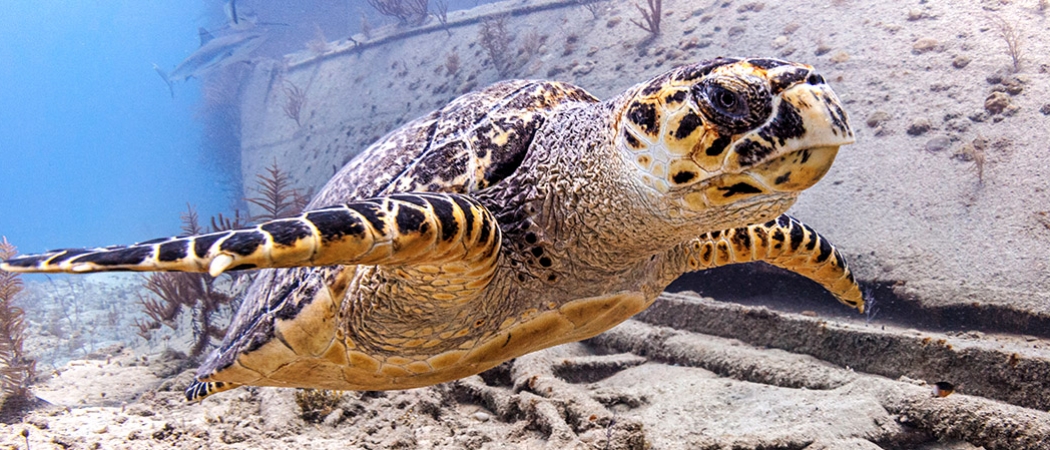
Under the sea in Aruba
Just off the north-western coast of Aruba is where you’ll find one of the Caribbean’s largest shipwrecks: the SS Antilla. This 121-metre-long giant was once a cargo ship, but now it’s one of Aruba’s most popular dive sites. Advanced divers can even explore the ship’s interior and meet some of the Caribbean marine life that’s made the shipwreck their home. An entire ecosystem has formed in and around the ship: corals and sponges that colonize the wreck attract lobsters that feed on them, while various species of tropical fish and moray eels take refuge in its hull. If you’re lucky, you might even catch a glimpse of a hawksbill sea turtle!
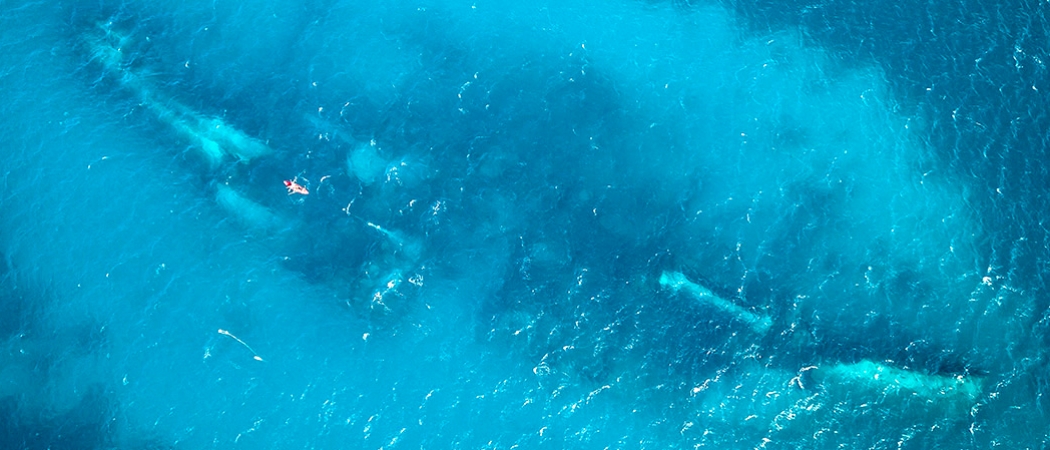
Diving Into the Dominican
Shipwrecks aren’t just for advanced divers! The 350-year-old wreck of the Quedagh Merchant was discovered off the coast of Catalina Island, by La Romana, in 2007. This 17th-century ship is only 3 metres underwater, so it’s a perfect place to earn your undersea legs. Plus, there’s daily trips from La Romana and Punta Cana, so it’s easy to start or end the day exploring the lush underwater surroundings. In fact, La Romana is home to the Dominican Republic’s calmest waters, so you can enjoy crystal-clear views of coral reefs, sea turtles and tropical fish.
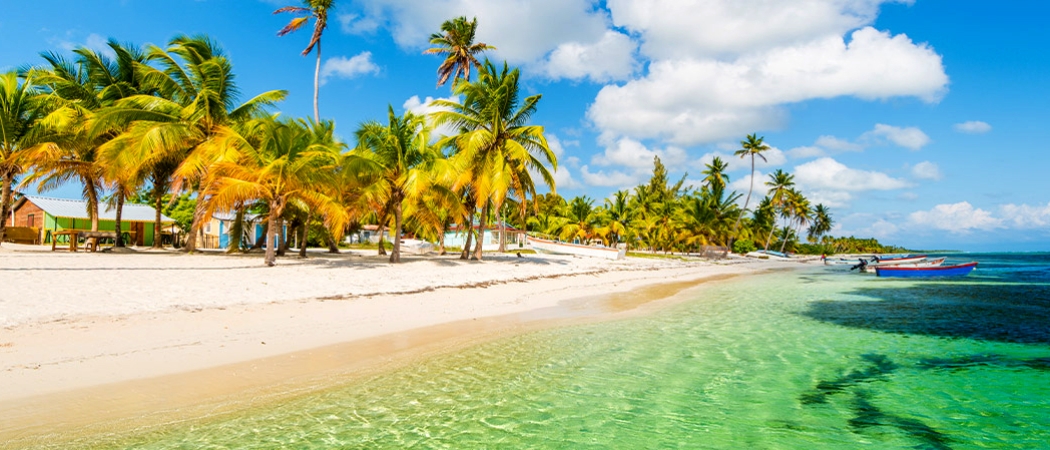
Cuba’s captivating coasts
As the largest island in the Caribbean, there’s no shortage of spots for scuba divers to submerge into and explore. Plus, it’s home to the largest marine reserve in the Caribbean: the Jardines de la Reina, or the Gardens of the Queen, which have been preserved in pristine condition since 1996. In fact, only 3,000 divers are permitted to visit these waters each year.
Along the shores of this lush archipelago, the average underwater visibility sits at a comfortable 30-40 metres. You’ll have no trouble spotting tropical fish, sea turtles, sharks, and dolphins easily while swimming through underwater vistas in this natural time capsule.
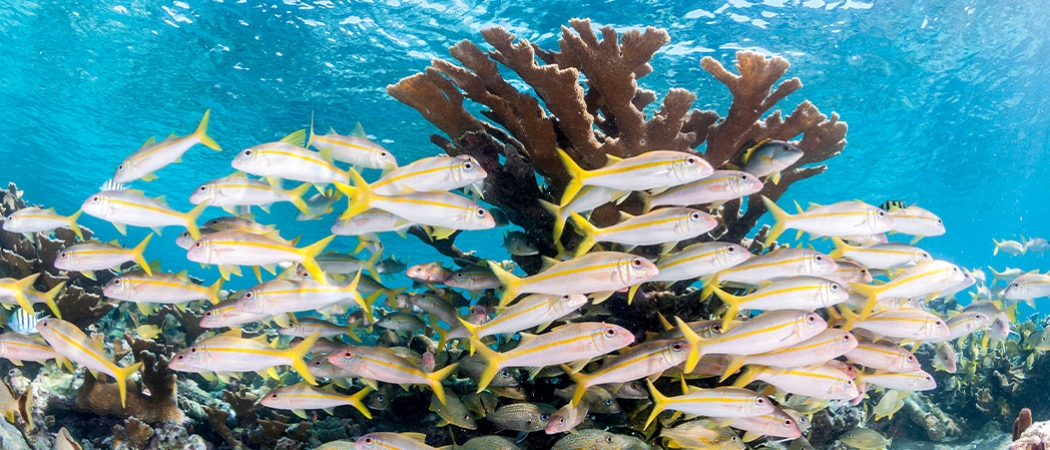
Find magic in Mexico: Cancún and Cozumel
In the waters around the Yucatán Peninsula, between Cancún and Isla Mujeres lies the world’s largest underwater museum, MUSA, with over 500 sculptures placed on the sea floor. The exhibits range from cars, sculptures, and structures—all colonized by coral—sitting at depths of 2-10 metres, making it appropriate for snorkellers and scuba divers alike.
For a more nature-oriented experience, visit nearby Cozumel, where the northern part of the Great Mayan Reef begins below the crystal-clear blue waters of Mexico’s Atlantic coast. Coral overhangs, walls and even caves and tunnel systems are within reach here.
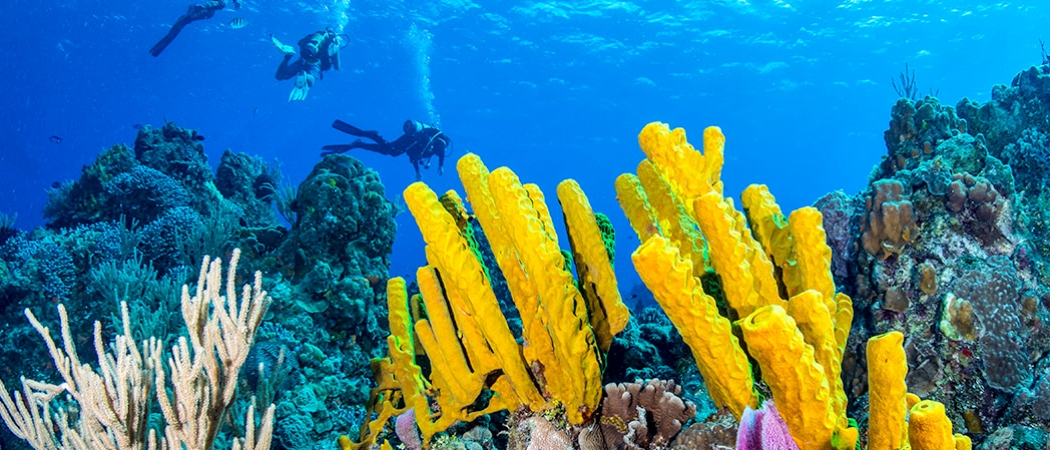
What’s next?
Excited to dive into your next adventure? Us too! Check out our collection of vacation packages and discover your next trip down where it’s wetter.
